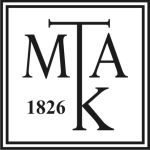A germán férji Munt és az egyházatyák házasságfelfogása
DOI:
https://doi.org/10.15170/Dike.2022.06.02.07Kulcsszavak:
marriage law, German husband Munt, Christianity, canonic law, Chruch Fathers, dignity, equality, patriarchal concept of marriage, European legal cultureAbsztrakt
From the age of the unfolding of feminist movements, the claim that the patriarchal concept of Christianity is responsible for the oppression of women in Europe has reappeared in the legal literature, too. It is a fact that natural law codes have not been able to ensure gender equality consistently either and it was not until the second half of the 20th century that the law of marriage was reformed in European states based on the principle of partnership. However, it is far from a fact that Christianity is to blame for the problems generally. In the following study, I present the concept of marriage that emerges from the writings of the Church Fathers (1st-8th centuries) in the light of the legal culture that provided the background for this. The examination covers how the marriage took place, the elements of the personal legal relationship between the husband and wife in the marriage, the issue of divorce and the matrimonial property law in force at that age. The study is divided into several stages according to the following time periods: The movement of the followers of Jesus in the second century moved away from Jewish legal culture, which not only manifested itself in the so-called substitutionary theory, but also influenced the understanding of marriage. Before 312, in the church of the age of persecution, the law of marriage remained within Roman private law, and at the time of marriage, the blessing was only a Christian custom which had no private legal effect. From 380 onwards, a state-church system developed bot in the eastern and western parts of the Roman Empire, in which state legislation (in the form of royal provisions) began in accordance with ecclesiastical expectations and principles. Although matrimonial legislation and jurisdiction were transferred to the state church, there was no mandatory external form for marriage until 1215 (Later Synod IV), and canon law could not be considered uniform throughout Western Christianity. It was clear from the writings of the Church Fathers that, because of the fact of creation, man (that is, both man and woman) was considered to be a dignified being, to the same extent. This approach, in which a husband raises his wife with love in a family under the husband, has not necessarily prevailed. On the one hand, after the fall of the Western Roman Empire, the conversion to Christianity in the Germanic tribal kingdoms was of the will of the rulers and did not necessarily conform to the personal convictions of the subjects, who therefore retained many elements of their pagan customs. This religious syncretism was further strengthened, on the other hand, by the fact that ecclesiastical teaching did not necessarily reach those who were otherwise open to receiving it. As a result, the Christian concept of marriage was in practice mixed with elements of the legal culture in which church members lived, and this resulted in several distortions. The survival of Germanic male power (Munt) may have been unbroken for centuries because it was justified by a distortion of the Christian concept of marriage.
Downloads
Megjelent
Hogyan kell idézni
Folyóirat szám
Rovat
License
Open Access politika: A folyóirat nyílt és korlátlan hozzáférést biztosít a tartalmához. Bárki jogosult a közzétett tartalmak letöltésére, felhasználására, nyomtatására, terjesztésére és/vagy másolására a nemzetközileg elfogadott tudományetikai normáknak megfelelően.
A folyóirat (Kiadó) szabadon elérhetővé és letölthetővé teszi a cikkeket saját hivatalos, kiadói honlapján, időbeli korlátozás nélkül. A cikk első közzétételének joga kizárólagosan a Kiadót illeti. A Szerző elfogadja, hogy a Kiadó a cikket oly módon teszi közzé, hogy a cikk felhasználási jogaira bármely harmadik fél számára az első közzétételt követően a Creative Commons Attribution-NonCommercial-SharAlike 4.0 (CC-BY-NC-SA 4.0) licenc feltételek az irányadók. A Kiadó e licensz keretében átalakíthatja a cikket tetszőleges elektronikus formátumba, a cikket számítógéppel vagy elektronikus adathordozóra másolhatja. A Kiadó a cikk közlési és felhasználási jogát megoszthatja bármely harmadik féllel, illetőleg e jogokat bármely harmadik féllel közösen gyakorolhatja. A Kiadó a Szerző nevében felléphet a cikkel kapcsolatos jogsértések, jogtalan felhasználás és szellemi tulajdon sérelmét jelentő magatartások esetén. Gyakorolhatja mindazon jogokat, amelyeket a fent megjelölt „CC BY NC SA 4.0” licenc feltételek lehetővé tesznek harmadik felek számára.










